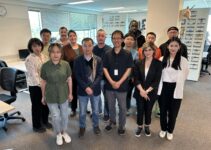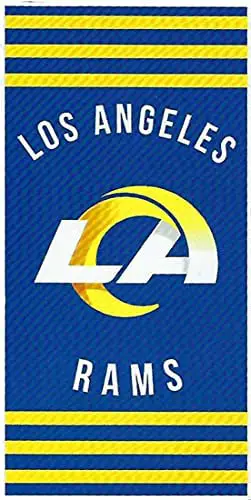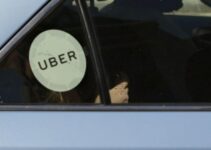As much of the tech world gathered in Las Vegas for the annual consumer tech trade show CES earlier this month, some attendees might have been surprised to see the opening Consumer Tech Association State of the Industry keynote address delivered by the chief executive of beauty giant L’Oreal.
But to Nicolas Hieronimus it made perfect sense that he would deliver the address. “We are a tech company,” says the L’Oreal CEO. “We are a beauty company, but we are a tech company.”
L’Oreal has been attending the event for a decade and is a nine-time CES Innovation Award honoree. “We’re demonstrating year in and year out that technology has the capacity to augment the power of beauty products and have an impact on people’s everyday life,” he told TIME. “We are here to change people’s lives with beauty products, and technology is the way to do it.”
Since 2016, the company has debuted products including the Hapta by its brand Lancôme, a motorized lipstick applicator designed to help people with limited dexterity, 3D Shu:Brow by Shu Uemura, a device for “printing” eyebrows onto your face, and it’s now taking on Dyson with the new AirLight Pro hair dryer, which Hieronimus says leaves hair 30% more moisturized, saves 30% in energy and dries 30% faster than traditional hair dryers. On the day of the keynote speech, L’Oreal also announced that it was buying Gjosa, a Swiss startup focused on water fractioning through products such as ultra-efficient showerheads.
Hieronimus spoke with TIME on Jan. 10, a day after his keynote address, and discussed his strategy for the company, sustainability plans and the outlook for the market.
This interview has been condensed and edited for clarity.
As the first beauty company CEO to give a CES keynote, your address was historic. Do you see L’Oreal as a technology company?
I see L’Oreal as a beauty tech company and that’s what we were here to state. To state that we are the leaders in beauty tech and to state the complementarity of technology with our core business, which is to create beauty that makes men and women both more beautiful [and] feeling better about themselves. Being given the opportunity to open CES this year and having this keynote was a reward for our years of planting seeds here at CES and also with all the tech community. A large number of the projects that have been awarded or that we have presented [at CES] are the results of co-operations with some of those startups. Also, it was a great opportunity to show that L’Oreal, after 115 years of seizing what is starting, which is our mantra—always being on the edge of what’s new and leveraging the new sciences and new technologies to invent new products—we are writing the future of beauty and this future is clearly augmented by technology. And that was the theme of the keynote, to show that future beauty has to be more inclusive, more sustainable, and more personalized. And that’s one of the areas where tech has the greatest power, to be able to create products or recommendations that are made for each and every single person—that are individual. It was a great demonstration of the innovation capacity of L’Oreal and our commitment to diversity.
You talked about your various innovative beauty products like the AirLight Pro, you demonstrated the Beauty Genius tool. You’ve had a tech incubator for a decade or more. What’s your strategy and how do you decide on the areas that you want to be focusing on?
We’re very opportunistic. We are always focusing on solving problems for our consumers or improving their satisfaction as it relates to our products. The choices we make are always the convergence of, on one hand, a problem, a need, an opportunity to augment consumer or professional satisfaction—because we work a lot with stylists and hairdressers. And on the other hand, a technology that we think can allow us to do it. So if I take the example of the new AirLight Pro hair dryer, we have one of the beauty gestures that’s the most common in the world—I think 75% of women use hair dryers—and as hair is growing longer and is also more diverse and mixed, the expectations are getting more and more important and difficult to satisfy. We know that everybody’s been using hair dryers forever, but hair dryers haven’t changed forever. It’s always been the same mechanism, with hot rods, using a lot of energy, overheating the hair, sometimes potentially creating damage. So there was a need, there was an opportunity. And on the other hand, we came across Zuvi, the fantastic Chinese startup. They had created a product called Halo, which had come up with this technology [that uses] infrared light and air to dry the hair in a more gentle and energy-saving mode. But this device was not efficient enough to be simple, and as we work with stylists we called these guys and we said “how can we create together the best hair dryer in the world and one that’s got to be both more sustainable, more effective and gentler to the hair?” And we worked together with our scientists, with a huge amount of data. So the combination of the engineers of Zuvi, of our own scientists, and our stylists allowed us to work and work and work and come up with something that is a fantastic product.
And for all the other projects we presented—whether it’s the Meta Profiler, which is for skincare diagnosis, or the colorsonic, [for at-home hair coloring]—it’s always the same story. Where’s the need? Where’s the opportunity? Where’s the problem we have to solve? And we find startups or engineers that can help us design a product that will make it happen.
You’ve also been quite acquisitive. There was Aesop last year and Gjosa recently. Would you say you’re in acquisition mode at L’Oreal?
We’re not particularly in acquisition mode. We are always looking at what’s out there. You have to be aware that any beauty company that wants to sell comes to us, because we are the world leaders. And the other thing is, out of the 37 international brands that L’Oreal manages, only two and a half were created by L’Oreal. L’Oreal Paris, L’Oreal Professional—that’s the half—and Kérastase. All the others were acquisitions, whether it’s Lancôme, Helena Rubinstein, CerVe, La Roche-Posay, Redken, etc. So we always have the same strategy. We build organic growth, we fuel the brands we have with the innovations that are developed by our labs—our 4,000 researchers, our Є1 billion spent on research. But whenever we see a brand or a technology that is complementary to what we already have, either in terms of price positioning, consumer profile, or even the type of products it does—and that was the case for Aesop—or it has a technology—which is the case with Gjosa—that we don’t have, then we try to acquire it and then use our global footprint to maximize its potential. We use our labs to improve its formulas when necessary. And that’s how we build successes.
When we acquired CeraVe, we did not have what we call a mass medical brand that’s prescribed by dermatologists but that is sold at a price that makes it affordable and accessible to everybody, basically. We acquired the brand 7 years ago, it was [making revenue of around] $150 million. And now it’s over $2 billion. That’s both thanks to our global footprint and our capacity to engage consumers and to market it to the largest numbers. So that’s the history of L’Oreal. That’s what we’re going to be trying to do with Aesop.
With Gjosa we acquired it not to make it a big profit maker: The idea [is] that we are determined to use this incredible technology that saves so much water—69% less water to rinse your hair at a salon and hopefully tomorrow in houses. And we know that if we want to really speed up the diffusion of this object that is now finalized in terms of taking off technology, but has to be adapted to every country, we need to own it. Because we know it has a real significant impact on one of the biggest problems that we have to face in terms of environment, which is water scarcity. We made this acquisition not to do business, but to do good, and to be true to our sense of purpose, which is to create the beauty that moves the world.
Can you tell me more about your sustainability strategy?
We’ve been embarking on the commitment to first of all reduce the impact of our products and then to have a positive contribution. In 2009 we started researching changing our formulas and we [launched] our first plan to reduce our impact. We had commitments to reduce CO2 emissions on our Scopes 1 and 2. Between 2015 and 2020 we reduced our CO2 emissions by around 90% in Scopes 1 and 2, whilst we increased our units by almost 40%, so it’s a real decoupling of our growth from our CO2 emissions.
Since 2020 we’ve launched our second big program, called L’Oreal for the Future, with a number of commitments, like having 100% of our sites being powered by green energy by 2025, and we’re getting close to 70%. All our North American sites, for example, are powered by carbon neutral energy. We are reducing our plastic: We are committed to moving to 100% PCR plastic [and] we’re over 70% on PET plastic already.
We’re moving all our formulas to bio-sourced ingredients—95% is our commitment by 2030. The challenge for our research [team] is to come up with the exact same level of performance with bio-sourced ingredients. We’re making good progress. One of our first green ingredient innovations is called Proxylane, which is a fantastic skincare ingredient to work on your skin firmness and density.
We’ve just submitted our science-based targets towards full carbon neutrality, including Scope 3. So now it’s getting more difficult, because it’s not just about us, it’s about our full ecosystem. So we have to push our suppliers and transporters and even our consumers [through products like Gjosa and AirLight Pro] to go greener. [Our impact is factored into] everybody’s bonuses—including myself. It’s in all our financial KPIs and individual rewards.
There’s a theory about lipstick purchases and what that tells us about the economy. You have a front row seat to see consumer spending on these sorts of affordable luxuries. What’s it telling you about where the economy is headed?
The last [few] years have not been the nicest, most peaceful years in the history of humanity, yet we see that the beauty market continues to thrive. [The past] year, despite the crisis, inflation and all the gloom and sometimes doom that has hit the world, the beauty market is growing—and was growing at the end of September by 9%. So it was one of the best years. And we see the market, even though it slowed down a little bit in the latter part of [last] year, is remaining very dynamic. And that’s precisely because, if lipstick is sometimes [seen as] a sign of resilience, and the fighting spirits of women, globally, beauty is a fantastic balm when times are tough. I call this the dopamine effect. It makes people happy. It makes people feel good about themselves. It’s a little affordable treat that allows people some time to escape from the bad news that they hear every day on TV. In 2023, in the world they had to live in, people went to watch Barbie and bought cosmetics, because it’s pink, it’s happy. And it works.
I’m very confident for the beauty market and ourselves because if I look at history, in the 37 years I’ve been at L’Oreal, the only year when the beauty market did not grow was 2020. And it was not because people didn’t want to buy beauty, it’s because the stores were closed. So as soon as the stores reopened, people started consuming—and probably more, because they discovered during COVID the benefits of pampering yourself, and we see more people [getting] into body care, into fragrance, into hair care. So [that’s] very positive for the market.


